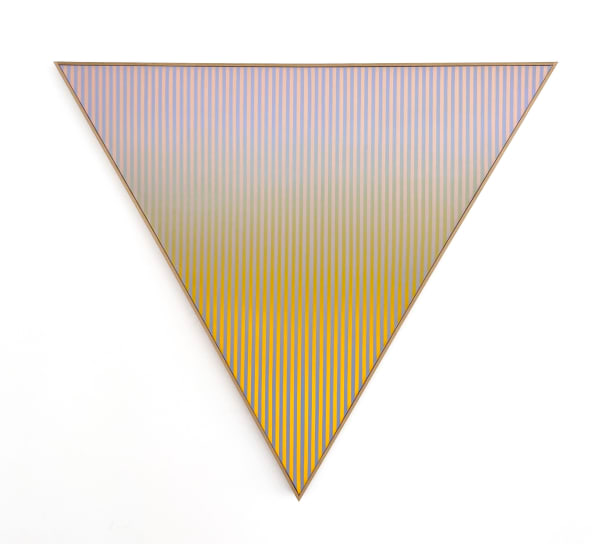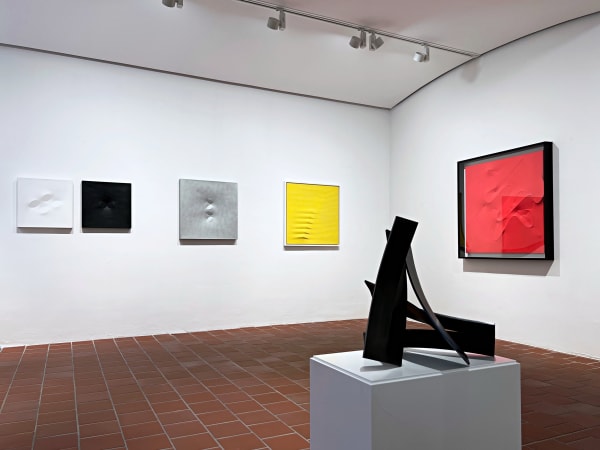Heinz Mack German, b. 1931
Overview
Heinz Mack is a co-founder of the ZERO movement and has had a lasting influence on art as a painter, light artist and sculptor since the late 1950s.
Heinz Mack, born in 1931 in Lollar (Hesse, Germany, lives and works in Mönchengladbach and Ibiza.), attended the Academy of Arts Düsseldorf during the 1950s. In 1956 he also earned a degree in philosophy at the University of Cologne. Together with Otto Piene he founded the group ZERO in 1957 in Düsseldorf. Besides his participation at Documenta II (1959) and Documenta III (1964), he also represented The Federal Republic of Germany at the XXXVth Venice Biennale in 1970. In the same year he was invited to Osaka (Japan) as a visiting professor. He also became a full member of the Berlin Academy of Arts, to which he belonged until 1992.
Heinz Mack has been honored with major awards including the Art Prize of the City of Krefeld (1958), the Premio Marzotto (1963), the 1st Prix arts plastiques at the 4th Paris Biennale (1965), 1st prize in the international competition Licht 79 in the Netherlands (1979), the Große Kulturpreis des Rheinischen Sparkassen-Verbands (1992) and the Cultural Prize of the city of Dortmund's arts council (2012). He also received the Grand Federal Cross of Merit with Star of the Federal Republic of Germany in 2011. In 2015, Heinz Mack was unanimously voted an honorary member of the Kunstakademie Düsseldorf by the academy's senate. In 2016, the city of Düsseldorf bestowed the Jan-Wellem-Ring upon Heinz Mack. He received the Moses Mendelssohn Medal in 2017.
The central theme of Heinz Mack's art is light. Sculptures and pictures are the media of his multifaceted oeuvre.
The exceptionally diverse complete works include sculpturesmade of different materials: light-stelae, light-rotors, light-reliefs and light-cubes. His oeuvre also involves paintings, drawings, India ink, pastels, graphics, photography and bibliophilic works. Another important aspect of Mack's work is the design of public spaces, church interiors, stage settings and mosaics.
His works have been shown in nearly 300 solo exhibitionsand numerous other group exhibitions. They are also found in 136 public collections. Numerous books and two films document his work.
Works
Exhibitions
-

Gallery Artists
2 Apr - 31 May 2025New works by Gallery ArtistsRead more -

Resonant Surface
The Intersection of Light, Color, and Space 5 Dec 2024 - 1 Feb 2025Opening December 5, 5-8 PM MARKUS ÅKESSON, KARIN ALFREDSSON, BERNARD AUBERTIN, GEORG BASELITZ, AGOSTINO BONALUMI, YLVA CARLGREN, PETER DOIG, DITTE EJLERSKOV, GOTTHARD GRAUBNER, RONI HORN, ÅSA JUNGNELIUS, IMI KNOEBEL, TOMAS...Read more -

Black & White
Multifarious 21 May - 27 Jul 2015Georg Baselitz Agostino Bonalumi Rafał Bujnowski Walter Dahn Dadamaino Enrico Castellani Neal Fox Walter Leblanc Heinz Mack Pino Manos Henri Matisse Armando Marrocco Jean-Luc Moerman Peter Peri Pablo Picasso Anselm...Read more




